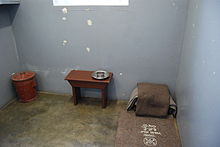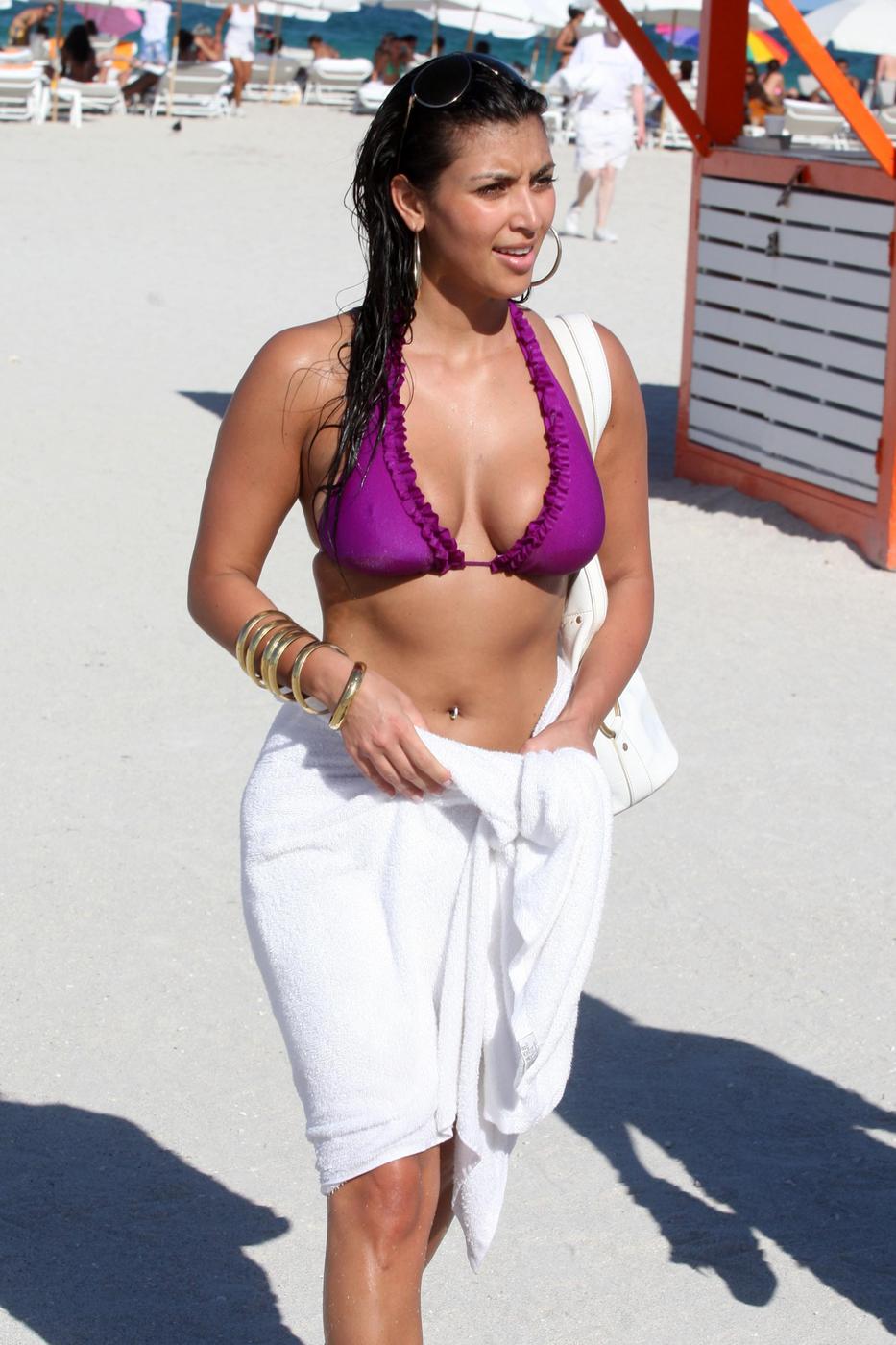|
|
|---|
Wednesday, October 6, 2010

Mandela in 2008
The Nobel Peace Prize 1993 and his history-
Nelson Mandela, F.W. de Klerk
The Nobel Peace Prize 1993
- Summary
- Press Release
Nobel Peace Prize Award Ceremony
- Award Ceremony Speech
Nelson Mandela-
- Biographical
- Nobel Lecture
- Article
- Questions and Answers
- Other Resources
F.W. de Klerk-
- Biographical
- Nobel Lecture
- Interview
- Other Resources
Biography-
 Nelson Rolihlahla Mandela was born in Transkei, South Africa on July 18, 1918. His father was Chief Henry Mandela of the Tembu Tribe. Mandela himself was educated at University College of Fort Hare and the University of Witwatersrand and qualified in law in 1942. He joined the African National Congress in 1944 and was engaged in resistance against the ruling National Party's apartheid policies after 1948. He went on trial for treason in 1956-1961 and was acquitted in 1961.
Nelson Rolihlahla Mandela was born in Transkei, South Africa on July 18, 1918. His father was Chief Henry Mandela of the Tembu Tribe. Mandela himself was educated at University College of Fort Hare and the University of Witwatersrand and qualified in law in 1942. He joined the African National Congress in 1944 and was engaged in resistance against the ruling National Party's apartheid policies after 1948. He went on trial for treason in 1956-1961 and was acquitted in 1961.After the banning of the ANC in 1960, Nelson Mandela argued for the setting up of a military wing within the ANC. In June 1961, the ANC executive considered his proposal on the use of violent tactics and agreed that those members who wished to involve themselves in Mandela's campaign would not be stopped from doing so by the ANC. This led to the formation of Umkhonto we Sizwe. Mandela was arrested in 1962 and sentenced to five years' imprisonment with hard labour. In 1963, when many fellow leaders of the ANC and the Umkhonto we Sizwe were arrested, Mandela was brought to stand trial with them for plotting to overthrow the government by violence. His statement from the dock received considerable international publicity. On June 12, 1964, eight of the accused, including Mandela, were sentenced to life imprisonment. From 1964 to 1982, he was incarcerated at Robben Island Prison, off Cape Town; thereafter, he was at Pollsmoor Prison, nearby on the mainland.
During his years in prison, Nelson Mandela's reputation grew steadily. He was widely accepted as the most significant black leader in South Africa and became a potent symbol of resistance as the anti-apartheid movement gathered strength. He consistently refused to compromise his political position to obtain his freedom.
Nelson Mandela was released on February 11, 1990. After his release, he plunged himself wholeheartedly into his life's work, striving to attain the goals he and others had set out almost four decades earlier. In 1991, at the first national conference of the ANC held inside South Africa after the organization had been banned in 1960, Mandela was elected President of the ANC while his lifelong friend and colleague, Oliver Tambo, became the organisation's National Chairperson.
From Les Prix Nobel. The Nobel Prizes 1993, Editor Tore Frängsmyr, [Nobel Foundation], Stockholm, 1994
This autobiography/biography was written at the time of the award and later published in the book series Les Prix Nobel/Nobel Lectures. The information is sometimes updated with an addendum submitted by the Laureate.
Nelson Mandela-
| His Excellency Nelson Mandela OM AC CC GCStJ QC GColIH RSerafO BR NPk MRCSI | |
President of South Africa | |
| In office 10 May 1994 – 14 June 1999 | |
| Deputy | Thabo Mbeki Frederik Willem de Klerk |
|---|---|
| Preceded by | Frederik Willem de Klerk As State President of South Africa |
| Succeeded by | Thabo Mbeki |
Secretary General of Non-Aligned Movement | |
| In office 3 September 1998 – 14 June 1999 | |
| Preceded by | Andrés Pastrana Arango |
| Succeeded by | Thabo Mbeki |
| Born | 18 July 1918 (1918-07-18) (age 92) Mvezo, Union of South Africa |
| Birth name | Rolihlahla Mandela |
| Nationality | South African |
| Political party | African National Congress |
| Spouse(s) | Evelyn Ntoko Mase (1944–1957) Winnie Madikizela (1957–1996) Graça Machel (1998–present) |
| Residence | Houghton Estate, South Africa |
| Alma mater | University of Fort Hare University of London External System University of South Africa University of the Witwatersrand |
| Religion | Methodism[citation needed] |
| Signature |  |
| Website | Mandela Foundation |
| Apartheid in South Africa |
|---|
| Events and Projects |
| Sharpeville massacre Soweto uprising · Treason Trial Rivonia Trial Church Street bombing · CODESA St James Church massacre Cape Town peace march |
| Organisations |
| ANC · IFP · AWB · Black Sash · CCB Conservative Party · ECC · PP · RP PFP · HNP · MK · PAC · SACP · UDF Broederbond · National Party COSATU · SADF · SAP |
| People |
| P. W. Botha · D. F. Malan Nelson Mandela Desmond Tutu · F. W. de Klerk Walter Sisulu · Helen Suzman Harry Schwarz · Andries Treurnicht H. F. Verwoerd ·Sheena Duncan Oliver Tambo B. J. Vorster · Kaiser Matanzima Jimmy Kruger · Steve Biko Mahatma Gandhi · Joe Slovo Trevor Huddleston · Hector Pieterson Winnie Madikizela-Mandela Mangosuthu Buthelezi |
| Places |
| Bantustan · District Six · Robben Island Sophiatown · South-West Africa Soweto · Sun City · Vlakplaas |
| Other aspects |
| Afrikaner nationalism Apartheid laws · Freedom Charter Sullivan Principles · Kairos Document Disinvestment campaign South African Police |
This box: view • talk • edit |
In South Africa, Mandela is often known as Madiba, an honorary title adopted by elders of Mandela's clan.
Mandela has received more than 250 awards over four decades, including the 1993 Nobel Peace Prize.
Early life-
Nelson Mandela belongs to a cadet branch of the Thembu dynasty, which reigns in the Transkeian Territories of South Africa's Cape Province. He was born in Mvezo, a small village located in the district of Umtata, the Transkei capital. His patrilineal great-grandfather Ngubengcuka (who died in 1832), ruled as the Inkosi Enkhulu, or king, of the Thembu people. One of the king's sons, named Mandela, became Nelson's grandfather and the source of his surname. However, because he was only the Inkosi's child by a wife of the Ixhiba clan (the so-called "Left-Hand House"), the descendants of his branch of the royal family were not eligible to succeed to the Thembu throne.Mandela's father, Gadla Henry Mphakanyiswa, served as chief of the town of Mvezo. However, upon alienating the colonial authorities, they deprived Mphakanyiswa of his position, and moved his family to Qunu. Despite this, Mphakanyiswa remained a member of the Inkosi's Privy Council, and served an instrumental role in Jongintaba Dalindyebo's ascension to the Thembu throne. Dalindyebo would later return the favour by informally adopting Mandela upon Mphakanyiswa's death. Mandela's father had four wives, with whom he fathered thirteen children (four boys and nine girls). Mandela was born to his third wife ('third' by a complex royal ranking system), Nosekeni Fanny. Fanny was a daughter of Nkedama of the Mpemvu Xhosa clan, the dynastic Right Hand House, in whose umzi or homestead Mandela spent much of his childhood. His given name Rolihlahla means "to pull a branch of a tree", or more colloquially, "troublemaker".
Rolihlahla Mandela became the first member of his family to attend a school, where his teacher Miss Mdingane gave him the English name "Nelson".
When Mandela was nine, his father died of tuberculosis, and the regent, Jongintaba, became his guardian. Mandela attended a Wesleyan mission school located next to the palace of the regent. Following Thembu custom, he was initiated at age sixteen, and attended Clarkebury Boarding Institute. Mandela completed his Junior Certificate in two years, instead of the usual three. Designated to inherit his father's position as a privy councillor, in 1937 Mandela moved to Healdtown, the Wesleyan college in Fort Beaufort which most Thembu royalty attended. At nineteen, he took an interest in boxing and running at the school.
After enrolling, Mandela began to study for a Bachelor of Arts at the Fort Hare University, where he met Oliver Tambo. Tambo and Mandela became lifelong friends and colleagues. Mandela also became close friends with his kinsman, Kaiser ("K.D.") Matanzima who, as royal scion of the Thembu Right Hand House, was in line for the throne of Transkei, a role that would later lead him to embrace Bantustan policies. His support of these policies would place him and Mandela on opposing political sides. At the end of Nelson's first year, he became involved in a Students' Representative Council boycott against university policies, and was told to leave Fort Hare and not return unless he accepted election to the SRC. Later in his life, while in prison, Mandela studied for a Bachelor of Laws from the University of London External Programme.
Shortly after leaving Fort Hare, Jongintaba announced to Mandela and Justice (the regent's son and heir to the throne) that he had arranged marriages for both of them. The young men, displeased by the arrangement, elected to relocate to Johannesburg. Upon his arrival, Mandela initially found employment as a guard at a mine. However, the employer quickly terminated Mandela after learning that he was the Regent's runaway ward. Mandela later started work as an articled clerk at a Johannesburg law firm, Witkin, Sidelsky and Edelman, through connections with his friend and mentor, realtor Walter Sisulu. While working at Witkin, Sidelsky and Edelman, Mandela completed his B.A. degree at the University of South Africa via correspondence, after which he began law studies at the University of Witwatersrand, where he first befriended fellow students and future anti-apartheid political activists Joe Slovo, Harry Schwarz and Ruth First. Slovo would eventually become Mandela's Minister of Housing, while Schwarz would become his Ambassador to Washington. During this time, Mandela lived in Alexandra township, north of Johannesburg.
Political activity-
After the 1948 election victory of the Afrikaner-dominated National Party, which supported the apartheid policy of racial segregation, Mandela began actively participating in politics. He led prominently in the ANC's 1952 Defiance Campaign and the 1955 Congress of the People, whose adoption of the Freedom Charter provided the fundamental basis of the anti-apartheid cause. During this time, Mandela and fellow lawyer Oliver Tambo operated the law firm of Mandela and Tambo, providing free or low-cost legal counsel to many blacks who lacked attorney representation.Mahatma Gandhi influenced Mandela's approach, and subsequently the methods of succeeding generations of South African anti-apartheid activists. (Mandela later took part in the 29–30 January 2007 conference in New Delhi marking the 100th anniversary of Gandhi's introduction of satyagraha (non-violent resistance) in South Africa).
Initially committed to nonviolent resistance, Mandela and 150 others were arrested on 5 December 1956 and charged with treason. The marathon Treason Trial of 1956–1961 followed, with all defendants receiving acquittals. From 1952–1959, a new class of black activists known as the Africanists disrupted ANC activities in the townships, demanding more drastic steps against the National Party regime. The ANC leadership under Albert Luthuli, Oliver Tambo and Walter Sisulu felt not only that the Africanists were moving too fast but also that they challenged their leadership. The ANC leadership consequently bolstered their position through alliances with small White, Coloured, and Indian political parties in an attempt to give the appearance of wider appeal than the Africanists. The Africanists ridiculed the 1955 Freedom Charter Kliptown Conference for the concession of the 100,000-strong ANC to just a single vote in a Congressional alliance. Four secretaries-general of the five participating parties secretly belonged to the reconstituted South African Communist Party (SACP). In 2003 Blade Nzimande, the SACP General Secretary, revealed that Walter Sisulu, the ANC Secretary-General, secretly joined the SACP in 1955 which meant all five Secretaries General were SACP and thus explains why Sisulu relegated the ANC from a dominant role to one of five equals.
In 1959, the ANC lost its most militant support when most of the Africanists, with financial support from Ghana and significant political support from the Transvaal-based Basotho, broke away to form the Pan Africanist Congress (PAC) under the direction of Robert Sobukwe and Potlako Leballo.
Imprisonment-

Robben Island prison yard

Nelson Mandela's prison cell on Robben Island
Whilst in prison Mandela undertook study with the University of London by correspondence through its External Programme and received the degree of Bachelor of Laws. He was subsequently nominated for the position of Chancellor of the University of London in the 1981 election, but lost to Princess Anne.
In his 1981 memoir Inside BOSS secret agent Gordon Winter describes his involvement in a plot to rescue Mandela from prison in 1969: this plot was infiltrated by Winter on behalf of South African intelligence, who wanted Mandela to escape so they could shoot him during recapture. The plot was foiled by British Intelligence.
In March 1982 Mandela was transferred from Robben Island to Pollsmoor Prison, along with other senior ANC leaders Walter Sisulu, Andrew Mlangeni, Ahmed Kathrada and Raymond Mhlaba. It was speculated that this was to remove the influence of these senior leaders on the new generation of young black activists imprisoned on Robben Island, the so-called "Mandela University". However, National Party minister Kobie Coetsee says that the move was to enable discreet contact between them and the South African government.
In February 1985 President P.W. Botha offered Mandela his freedom on condition that he 'unconditionally rejected violence as a political weapon'. Coetsee and other ministers had advised Botha against this, saying that Mandela would never commit his organisation to giving up the armed struggle in exchange for personal freedom. Mandela indeed spurned the offer, releasing a statement via his daughter Zindzi saying "What freedom am I being offered while the organisation of the people remains banned? Only free men can negotiate. A prisoner cannot enter into contracts."
Release-
On 2 February 1990, State President F.W. de Klerk reversed the ban on the ANC and other anti-apartheid organisations, and announced that Mandela would shortly be released from prison. Mandela was released from Victor Verster Prison in Paarl on 11 February 1990. The event was broadcast live all over the world.
On the day of his release, Mandela made a speech to the nation. He declared his commitment to peace and reconciliation with the country's white minority, but made it clear that the ANC's armed struggle was not yet over when he said "our resort to the armed struggle in 1960 with the formation of the military wing of the ANC (Umkhonto we Sizwe) was a purely defensive action against the violence of apartheid. The factors which necessitated the armed struggle still exist today. We have no option but to continue. We express the hope that a climate conducive to a negotiated settlement would be created soon, so that there may no longer be the need for the armed struggle."
He also said his main focus was to bring peace to the black majority and give them the right to vote in both national and local elections.
Statues and civic tributes-
Tributes to Nelson Mandela

The statue of Mandela in Parliament Square, London.

6 meter statue at Nelson Mandela Square, Sandton, Johannesburg

Nelson Mandela Gardens in Leeds

Nelson Mandela Bridge in Johannesburg
On 31 March 2004, Sandton Square in Johannesburg was renamed Nelson Mandela Square, after a 6-metre statue of Nelson Mandela was installed on the square to honour the famous South African statesman.
On 29 August 2007, a statue of Nelson Mandela was unveiled at Parliament Square in London by Richard Attenborough, Ken Livingstone, Wendy Woods (widow of Donald Woods), and Gordon Brown. The campaign to erect the statue was started in 2000 by the late Donald Woods, a South African journalist driven into exile because of his anti-apartheid activities. Mandela stated that it represented not just him, but all those who have resisted oppression, especially those in South Africa. He added: "The history of the struggle in South Africa is rich with the stories of heroes and heroines, some of them leaders, some of them followers. All of them deserve to be remembered." An earlier London statue resides on the South Bank of The Thames, dating from 1985.
On 27 August 2008, a statue of Nelson Mandela was unveiled at Groot Drakenstein Correctional Centre between Paarl and Franshhoek on the R301 road, near Cape Town. Formerly known as Victor Verster, this was where Mandela spent the last few years of his 27 years in jail in relative comfort, as he and other ANC stalwarts negotiated with the apartheid government on the terms of his release and the nature of the new South Africa. It stands on the very spot where Mandela took his first steps as a free man. Just outside the prison gates – the culmination of the Long Walk to Freedom – the title of Mandela's autobiography.
After 1989's Loma Prieta Earthquake demolished the Cypress Street Viaduct portion of the Nimitz Freeway in Oakland, California, the city renamed the street-level boulevard that replaced it Mandela Parkway in his honour.
In Leicester, England there is a Nelson Mandela Park with the slogan "South Africa belongs to all those who live there, Black and White". It is opposite Leicester Tigers ground Welford Road.
Nelson Mandela Day-
Mandela Day on 18 July is an annual international day adopted by the United Nations. Individuals, communities and organisations are asked to donate 67 minutes to doing something for others, commemorating the 67 years that Nelson Mandela gave to the struggle for social justice.From Wikipedia-
Labels: mandela news, picture, spech and his history.
0 Comments:
Subscribe to:
Post Comments (Atom)

















